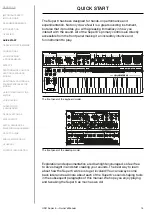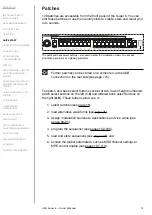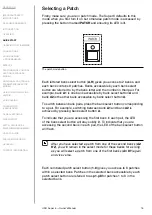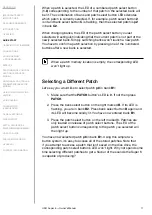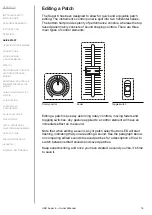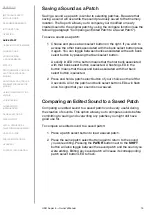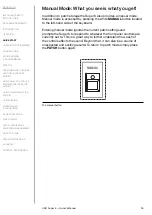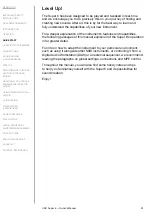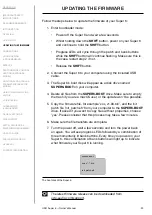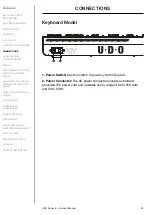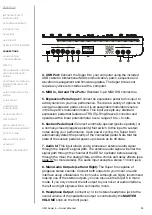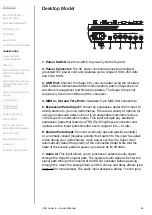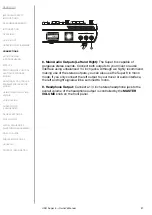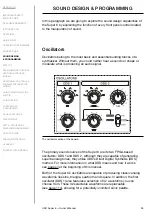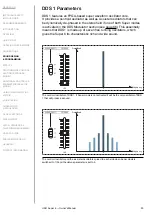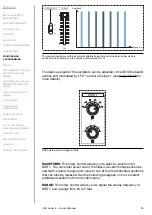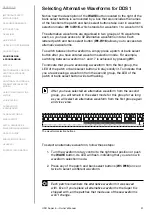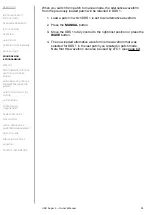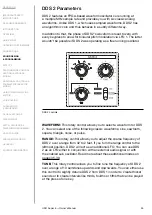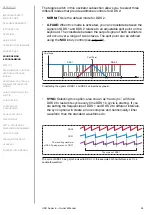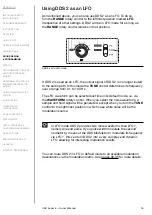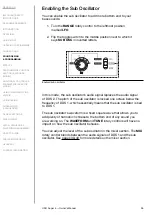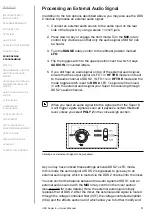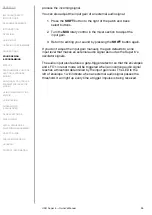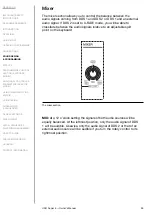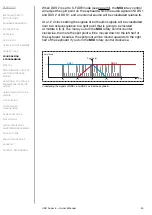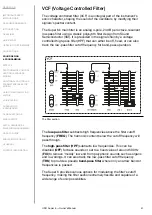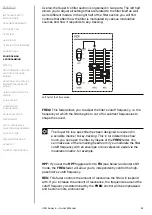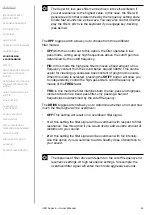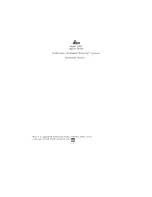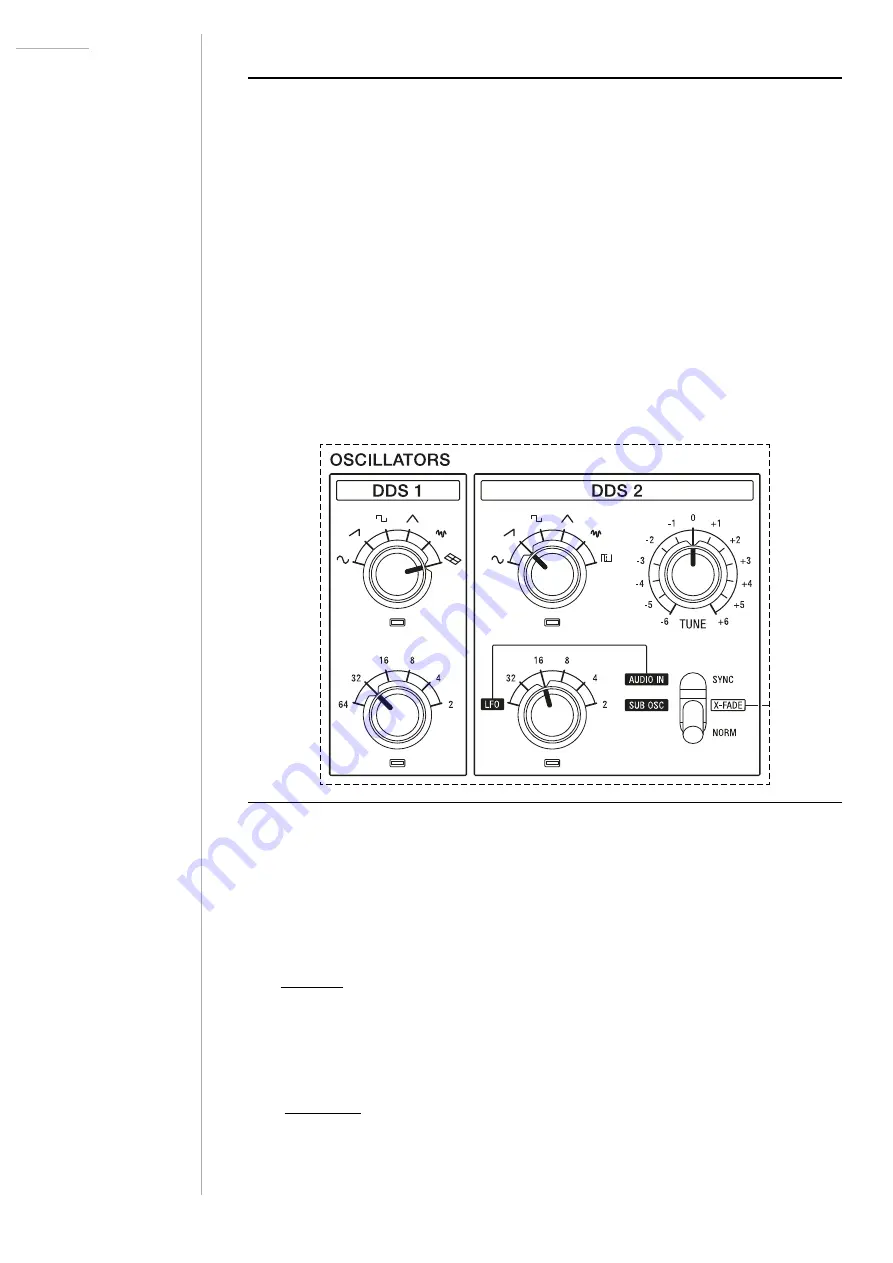
UDO Super 6 — Owner’s Manual
28
SOUND DESIGN & PROGRAMMING
In this paragraph we are going to explore the sound design capabilities of
the Super 6 by explaining the function of every front panel control related
to the manipulation of sound.
Oscillators
Oscillators belong to the most basic and essential building blocks of a
synthesizer. Without them, you could neither hear a sound nor shape or
modulate what is producing an audio signal.
The oscillator section of the Super 6.
The primary sound sources of the Super 6 are its two FPGA-based
oscillators: DDS 1 and DDS 2. Although they are capable of generating
superb analog tones, they utilise UDO’s Direct Digital Synthesis (DDS)
method. For more information on what DDS means and how it works
see page xii at the beginning of this manual.
Both of the Super 6’s oscillators are capable of producing classic analog
waveforms like sine, triangle, sawtooth and square. In addition, the first
oscillator (DDS 1) also features a selection of 32 waveforms you can
choose from. These 32 selectable waveforms are replaceable
(see page 114), allowing for a potentially unlimited sonic palette.
Summary of Contents for SUPER 6
Page 142: ......

